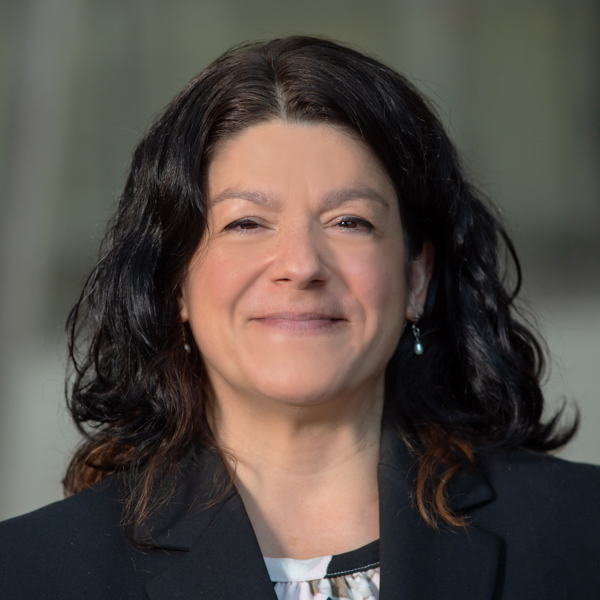Marking a departure from previous years, the 2017 edition of the flagship economic research conference explored ways to expand opportunity for all households and to revitalize cities. The Philadelphia Fed has recently deepened its research emphasis on equitable growth, launching the Economic Growth & Mobility Project, an initiative that explores evidence-based solutions to promote inclusive growth.
While the first two sessions of the conference featured presentations of new research, the final session focused on practice. Dennis Lower, president and chief executive officer of the Cortex Innovation Community, and Michael Nutter, former mayor of Philadelphia, drew from their own experiences to discuss strategies for renewing urban spaces and for increasing participation in the economy. Lower leads a thriving and diverse innovation and technology district in downtown St. Louis,1 and Nutter, who left office in 2016, is now a professor at Columbia University and a senior fellow at Bloomberg Philanthropies’ What Works Cities initiative2, among other roles. Amy Liu, vice president and director of the Metropolitan Policy Program at the Brookings Institution3, moderated the discussion.
In introductory remarks to the session, Drexel University President John Fry detailed the role anchor institutions, such as universities and hospitals, can play in economic inclusion. Drexel has worked for many years to narrow the stark economic divide between the area surrounding the campus and the larger, economically distressed community of West Philadelphia. The university has partnered with other organizations to recruit and train residents for jobs, help homeowners stay in and improve their homes, and open Science Leadership Academy Middle School in the neighborhood, among other initiatives.
Fry emphasized that promoting inclusion requires “a fundamental culture change.” Furthermore, he stressed the difficulty of this type of change. “It takes hard, intentional work for a long time,” he said.
Research Bolsters the Case for Inclusion
In her remarks, Liu made the research case for inclusion concluding that good economic development is “inherently inclusive,” because if the goal is sustainable growth, public leaders and institutions must work to maximize the number of people, firms, and neighborhoods participating in and benefiting from the economy.
Citing a recent Brookings analysis, she pointed to findings showing that metropolitan areas with higher upward mobility for low-income children tend to have faster per capita income growth. Conversely, areas with high poverty and social instability “exact costs to taxpayers and to economic stability.” At the same time, Liu said, growth is necessary for inclusion: When demand for labor is high, wages are more likely to rise, and poverty is more likely to decline. Moreover, research has found that areas with high levels of innovation and patenting also appear to have higher social mobility, especially for low-income individuals.4
Despite the body of evidence connecting economic growth and inclusion, Liu said, most cities address the two issues separately. “Growth actors,” such as employers and chambers of commerce, and “inclusion actors,” such as community and workforce development practitioners, operate in different spheres.5 They rely on separate funding streams and use different metrics to gauge success.
Liu pointed out that the U.S. population is growing increasingly multiracial and multiethnic, and yet evidence shows that the digital economy does not always benefit communities of color. Indeed, data show minorities are overrepresented in low-wage, low-tech jobs and are underrepresented in high-tech, high-paying jobs. “How we navigate the changing environment absolutely matters,” Liu said. “We need to be intentional about how we prepare our communities for that future.”
The Need for Honesty About Automation and Jobs
Nutter also touched on how technology is changing the economic landscape but spoke about the benefits of the shared economy. He said new services like Airbnb, Uber, and Lyft allow citizens to generate income from their homes and cars. Nutter issued a note of caution regarding automation, though, saying that leaders should be honest about how many jobs will disappear. Although the common perception is that jobs move overseas, many more will fall victim to automation. Uber, Lyft, and taxi drivers will eventually lose their jobs to driverless cars, he said.
Nutter noted that new technology will also create jobs, advocating for a return to career and technical education to train workers for them. “One of the worst decisions ever made in education was to allow those systems to fail,” he said, also noting that career and technical education can provide individuals with the tools they need to convert their creativity into new jobs.
Nurturing the Entrepreneurial Spirit
The Cortex Innovation Community, headed by Lower, is a good example of an approach that integrates support from anchor institutions and attracts private dollars. The organization relies on five sponsor institutions — three universities, the largest healthcare system in the Midwest, and the Missouri Botanical Garden. The group began directing resources to a vacant and blighted area between St. Louis University and Washington University in 2002. A key component of Cortex’s strategy is to concentrate people, businesses, and services in an urban space so that entrepreneurs can be close to talent coming out of local universities and easily access infrastructure and amenities. Currently, the 200-acre district is home to nine different innovation centers, with four additional centers under development. The proximity of the centers has attracted large regional companies and outside capital. In the last two years, there has been approximately $700 million of new development in the surrounding area unrelated to Cortex, Lower noted.
Cortex also focuses on building a comprehensive network of support for entrepreneurs. Its weekly Venture Café gathering brings in hundreds of people in the innovation community to network and participate in educational sessions. Cortex seeks to create a sense of community and harness the creativity of entrepreneurs, said Lower. Digital technologies have “democratized production, design, and creativity,” he said, and the maker movement has given individuals the ability to create and market products using new online outlets.
“Inclusivity is one of our major goals,” said Lower. Cortex has a broad range of programs aimed at ensuring job access for local residents, increasing participation from minority- and women-owned businesses, and improving educational outcomes. It also specifically targets underrepresented groups in its offerings for entrepreneurs. For example, each year, Cortex puts 70 to 75 new people through entrepreneur “boot camps,” and about 50 percent of the participants are women or people of color.
Lower described how Cortex broadened its definition of entrepreneurship to focus on creativity and changed the language it used to inspire participation from minority groups. “Unless you see someone on the stage that looks like you, you don’t believe you can do it yourself,” Lower said.
Nutter said that “the larger story here is about collaboration and coordination.” He said that the City of Philadelphia could do a better job of fostering coordination among the private, philanthropic, and public sectors when economic development plans for the city are being discussed. “If we’re going to have conversations about economic inclusion, then the room should be economically inclusive for that conversation,” Nutter said.
Further Information
For more information and to view videos of this discussion and other presentations, see the Policy Forum’s agenda.
The views expressed here do not necessarily represent the views of the Federal Reserve Bank of Philadelphia or the Federal Reserve System.
[1]For more on the Cortex Innovation Community, visit https://cortexstl.com/.
[2]For more on Bloomberg Philanthropies What Works Cities initiative, visit https://whatworkscities.bloomberg.org/.
[3]For more on the Brookings Institution’s Metropolitan Policy Program, visit https://www.brookings.edu/program/metropolitan-policy-program/.
[4]The Brookings Institution’s analysis can be found at https://tinyurl.com/yalnzbt7.
[5]See https://tinyurl.com/yalnzbt7.

